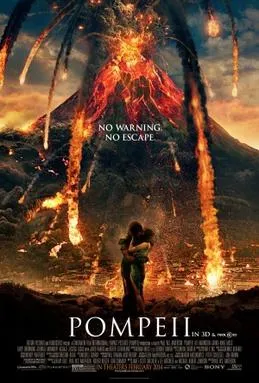Historical accuracy of Pompeii

Historical accuracy of Pompeii

Characters
The characters are fictional
All the characters are fictional
Story
The eruption of Mount Vesuvius
The eruption of Mount Vesuvius in 79 AD is a historical fact and the central event of the film. The film accurately depicts the catastrophic nature of the eruption.
The destruction of Pompeii
The destruction of Pompeii by the volcanic eruption is also a historical fact. The film portrays the city's destruction, albeit with some dramatic license.
The love story
The love story between the gladiator and the noblewoman is a fictional element added for dramatic appeal. There's no historical evidence to support this particular narrative.
The Roman political intrigue
The film incorporates some elements of Roman political intrigue, but these are largely fictionalized and serve to drive the plot. The specific characters and events depicted are not historically accurate.
The escape from Pompeii
The dramatic escape attempts depicted in the film are largely fictional. Most residents of Pompeii perished during the eruption, and the film's focus on a few individuals escaping is a narrative device.
Setting
Gladiator combat in Pompeii
Gladiator combat was a part of Roman culture, and it's plausible that such events took place in Pompeii. However, the film's depiction of gladiatorial combat is likely romanticized and exaggerated for entertainment purposes.
The social classes in Pompeii
The film portrays some aspects of social hierarchy in Pompeii, but it simplifies the complexities of Roman society. The interactions between different social classes are often used for dramatic effect and may not be entirely representative of historical reality.
The presence of Celtic gladiators
Gladiators came from various backgrounds throughout the Roman Empire, including Celtic regions. It is plausible that a Celtic gladiator could have been present in Pompeii.
The depiction of the eruption's effects
The film's depiction of the pyroclastic flows and other volcanic effects is generally considered to be accurate, based on scientific understanding of the event. The visuals are dramatic but grounded in what science suggests happened.
The depiction of daily life in Pompeii
The film offers glimpses into daily life in Pompeii, but these are often romanticized or used as background for the main plot. While some elements are accurate, the overall portrayal is not a fully comprehensive or historically rigorous depiction.
The accuracy of the costumes
The costumes in the film are generally inspired by Roman attire, but they take some artistic liberties for visual appeal. They are not necessarily perfectly accurate historical representations.
Overall
The overall historical accuracy
While the film uses the eruption of Vesuvius as its backdrop, it prioritizes action and romance over historical accuracy. Many elements are fictionalized or exaggerated, making it a poor representation of the actual events and life in Pompeii.
The focus on spectacle
The film excels at depicting the spectacle and devastation of the volcanic eruption. This aspect is a strong point, even if other historical elements are lacking.
